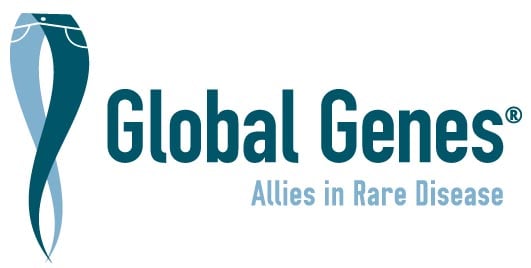Protalix and Chiesi Report Positive Results from Open-Label, Switch Over Trial of Therapy for Fabry Disease
February 23, 2021
Rare Daily Staff
Protalix BioTherapeutics and Chiesi Global Rare Diseases reported positive topline results from the BRIGHT phase 3 study evaluating their enzyme replacement therapy PRX-102 for Fabry disease administered every four weeks, instead of every two weeks, the current standard of care.
The companies said the study achieved key objectives for safety, efficacy, and pharmacokinetics, with all patients enrolling in an extension study.
Fabry disease is an X-linked inherited disease that results from deficient activity of the lysosomal α-Galactosidase-A enzyme resulting in progressive accumulation of abnormal deposits of a fatty substance called globotriaosylceramide (Gb3) in blood vessel walls throughout a person’s body. Fabry patients inherit a deficiency of the α-Galactosidase-A enzyme, which is normally responsible for the breakdown of Gb3. The abnormal storage of Gb3 increases with time and, accordingly, Gb3 accumulates, primarily in the blood and in the blood vessel walls. The ultimate consequences of Gb3 deposition range from episodes of pain and impaired peripheral sensation to end-organ failure–particularly of the kidneys, but also of the heart and the cerebrovascular system.
Pegunigalsidase alfa (PRX-102) is an experimental, plant cell culture-expressed, and chemically modified stabilized version of the recombinant α-Galactosidase-A enzyme. Protein sub-units are covalently bound via chemical cross-linking using short PEG moieties, resulting in a molecule with unique pharmacokinetic parameters. In clinical studies, PRX-102 has been observed to have a circulatory half-life of approximately 80 hours. The company designed PRX-102 to potentially address the continued unmet clinical need in Fabry patients.
The third clinical study to demonstrate positive outcome in support of PRX-102, the BRIGHT study is a phase 3 12-month, open-label, switch-over study designed to evaluate the safety, efficacy and pharmacokinetics of PRX–102 treatment, 2 mg/kg every four weeks, in up to 30 patients with Fabry disease previously treated with a commercially available enzyme replacement therapy (ERT) (agalsidase alfa–Replagal or agalsidase beta–Fabrazyme), for at least three years and on a stable dose administered every two weeks.
Topline results indicate that 2 mg/kg of PRX–102 administered by intravenous infusion every four weeks was found to be well tolerated among treated patients, and stable clinical presentation was maintained in adult Fabry patients. No new patients developed treatment-induced anti-drug antibodies following the switch to PRX–102 treatment.
“The results indicate that this investigational therapy is well tolerated and potentially an effective treatment for adult patients living with Fabry disease,” said Einat Brill Almon, senior vice president and chief development officer of Protalix. “We are encouraged to see that all of the patients who completed this study chose to enroll in the long-term extension study. Currently, 80 percent of the patients enrolled in the BRIGHT study have been treated with this treatment regimen for over two years.”
The BRIGHT study enrolled 30 adult patients (24 males and 6 females). The most common Fabry disease symptoms were acroparesthesia, heat intolerance, angiokeratomas and hypohydrosis. All 30 patients received at least one dose of PRX–102, and 29 patients completed the 12-month study. Of these 29 patients, 28 received the intended regimen of 2 mg/kg every four weeks throughout the study, while one patient was switched to PRX–102 1 mg/kg every two weeks per protocol. One patient withdrew from the study after the first infusion due to a traffic accident.
Following screening, patients were enrolled and switched from their then current ERT to intravenous (IV) infusions of 2 mg/kg of PRX–102 every four weeks for 52 weeks (a total of 14 infusions). First infusions of PRX-102 were administered under controlled conditions at the investigation site. Based on the protocol-specified criteria, patients were able to receive their PRX-102 infusions at a home care setup once the Investigator and Sponsor Medical Monitor agreed that it was safe to do so. Safety and efficacy exploratory endpoints were assessed throughout the 52-week study.
Study outcome measures showed plasma lyso–Gb3 concentrations remained stable during the study with a mean change of 3.01 nM from baseline (19.36 nM) to Week 52 (22.23 nM). Mean absolute change of eGFR values were stable during the 52–week treatment period, with a mean change from baseline of –1.27 mL/min/1.73 m2.
Following a survey of participants using the Quality of Life EQ-5D-5L questionnaire, responses indicate that patient perception of their own health remained high and stable throughout the 52–week study duration, with overall health mean (SE) scores of 78.3 (3.1) and 82.1 (2.9) at baseline and Week 52, respectively, in a 0 to 100 scale. Using the short-form Brief Pain Inventory (BPI) questionnaire, approximately 75 percent of study participants had an improvement or no change in average pain severity at Week 52 (compared to baseline). The short-form BPI interference items also remained stable during the study. Pain-related results indicate that there was no increase and/or relapse in pain. No Fabry clinical events were reported during the study.
“Of the 30 patients enrolled, 20 patients remained negative for anti-drug antibodies throughout the course of treatment. Of the 10 patients who were initially positive for anti-drug antibodies, four became negative for neutralizing antibodies at 12 months, suggesting tolerization by these patients,” said Almon. “We find this immunogenicity data very encouraging and supportive to the positive benefit-risk profile of PRX–102.”
Protalix and Chiesi intend to report final data on the BRIGHT study in the second half of 2021, and to present these findings at an appropriate medical conference.
Photo: Einat Brill Almon, senior vice president and chief development officer of Protalix

Stay Connected
Sign up for updates straight to your inbox.
